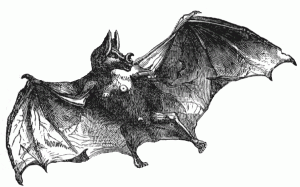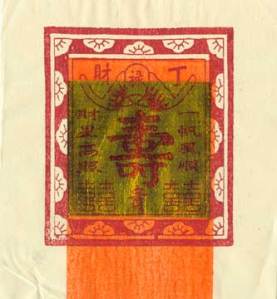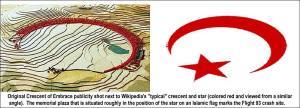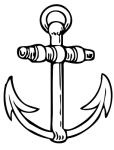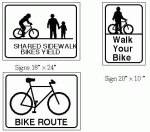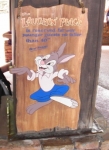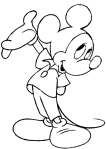With the continuous technological advancements, societies around the globe are becoming closer together each day. Gone are the days when graphic designers create for their own culture. Nowadays, in order to successfully communicate to a wide audience, we must recognize the fact that things (objects, shapes, colors, etc.) carry different symbolic meanings to different cultures. Careful and thorough research effort is crucial before the design is published or we risk generating undesired controversy, or some big laughs.
One of the examples of symbols I found that has different meanings in different cultures is bats.
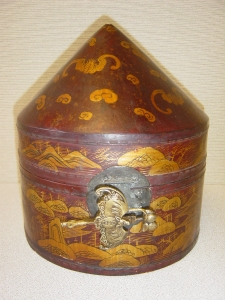
Late Qing Dynasty wedding cake box — the bat is part of the overall design on the box as well as the metal closure
While the bat usually represents demons and evil spirits in the Western world, it symbolizes good fortune in Eastern countries.
Color is another design element that graphic designers must carefully consider when creating cross-cultural design work. In the Western culture, brides wear white on their wedding day because it signifies purity and righteousness. In China, on the other hand, it is a color of funeral, mourning, and death.
A few years ago, the paper crafting business here in the United States began selling some paper products bearing gold leaf as well as Chinese writing (see image below). It became an instant hit among crafters because of the popular Asian theme and the inherit meaning of luxury that gold leaf has in our world. What the merchants did not communicate was that this is joss paper (hell money) — something that Chinese people burn to send to their loved ones who have past away so they have money to spend in their after life.
While the above example became an object of ridicule, some other mistakes can create much more significant consequences. Take the Flight 93 Memorial proposal for example. It was designed by Los Angeles architect Paul Muldoch to honor the 40 heroes who gave their lives taking down a terrorist on September 11, 2001 before the plane crashed in Pennsylvania. He named it “Crescent of Embrace.”
The design of the memorial generated much controversy because the overall shape of it resembles the crescent and the star on the Islamic flag. In this case, instead of a local designer created something that upset a foreign culture, it actually angered citizens of our own. Many have been petitioning to the government for a design change. I believe that the architect designed the memorial out of total respect and admiration toward the bravery of these heroes because another article detailed how exquisite the overall design is. This demonstrates how innocent design work can be interpreted in a total opposite direction when it is most unexpected.
Sources:
http://etc.usf.edu/clipart/1700/1770/vampire-bat_1_lg.gif
http://hwlf.files.wordpress.com/2009/09/late_qing_dynasty_wedding_cake_box.jpg
http://media.photobucket.com/image/islamic%20symbol/AlecRawls/MockUpandCrescentBorderedWithCaptio.jpghttp://www.crossroad.to/Books/symbols1.html
http://pittsburgh.about.com/od/flight_93/ss/memorial_photos.htm
http://www.chinahistoryforum.com/index.php?/topic/16269-what-does-red-colour-mean-in-chinese-culture/?s=f9f4e354d2e6435cbc89d6dfc226df10
http://www.luckymojo.com/gay-vang-bac-tho-joss-paper.jpg
http://www.ridingthebeast.com/articles/colors/
http://www.wnd.com/index.php?fa=PAGE.view&pageId=60990
